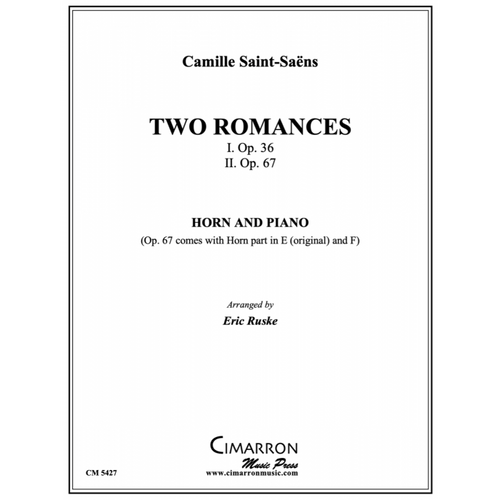Camille Saint-Saens - Andante for Horn and Organ
We must count Camille Saint-Saëns among the child prodigies of music history, because at the age of six he was already playing the piano, composing songs and small pieces. His mother and great-aunt showed him his first steps on this instrument. At just eleven years old he gave his first concert in the Salle Pleyel in Paris. Two years later he was accepted into the Paris Conservatory. There he was taught by Camille Stamaty on the piano and François Benoit on the organ. He received composition lessons from Fromental Halévy. As a student he met the professor of valve horn Jean-Pierre Meifred (1791-1867) at the Paris Conservatoire. Meifred was the first horn player in France to adopt Stölzel's new idea for valves on brass instruments and to gain his own experience with the often technically inadequate and vulnerable valves of the first generation of valve horns. He worked with Dauprat and played his own composition on the valve horn at the first concert of the Societé des Concerts du Conservatoire in 1828. At this concert, the Parisian public heard the new valve horn for the first time. In 1838, he was commissioned by the Conservatoire in Paris to set up and teach a class for valve horn. Camille Saint-Säens composed this Andante for valve horn and organ for Jean-Pierre Meifred. In 1852 he was appointed organist at the Église Saint-Merry, and from 1857 he was given the same position at the Eglise de la Madeleine. From 1861, the École Niedermeyer hired him as a piano teacher. In his capacity as a virtuoso and conductor, he traveled, but preferred his own works. He had a troubled relationship with the Impressionists, and he did not like Richard Wagner. He was friends with Franz Liszt, who also supported the premiere of his opera "Samson and Delilah" in Weimar and conducted the work. Prompted by Auber, Saint-Saëns composed a total of ten operas, apart from "Frédégunde", which he attempted to write in collaboration with other composers. In more recent times he has also had success with The Yellow Princess and Henry IIX. A magnet at all opera houses is of course "Samson and Delilah". Hardly any alto singer misses the opportunity to include the solo scenes of Delilah in her singer portrait. The composer was prolific in all areas of orchestral and chamber music. Thrown together with a light touch and produced in a hurry, not everything that glitters is gold. This did not affect the popularity of his violin, cello and piano works. Stylistically, Saint-Saëns is considered a classicist on the threshold of romanticism. The zoological fantasy "Carnival of Animals" is popular. Together with César Franck, Saint-Saëns founded the "Société Nationale de Musique", which set itself the goal of presenting a national French music, as if such had not existed long after Hector Berlioz ushered in the century with his "Symphonie Fantastique". The founding member contributed four symphonic poems. The highly decorated and highly honored man died in Algiers at the ripe old age of 86. There is a museum in Dieppe that bears his name.







